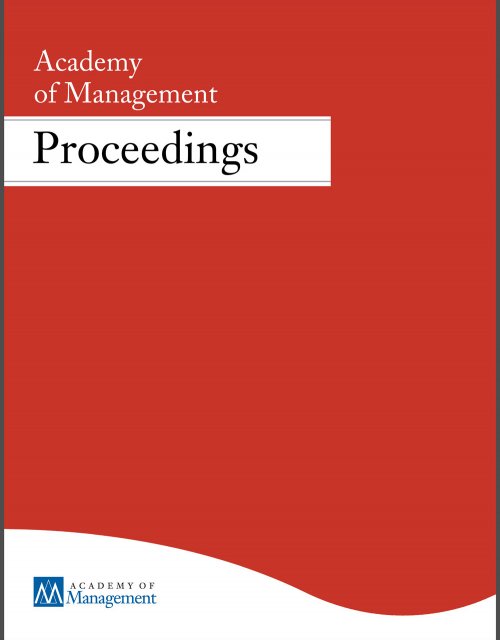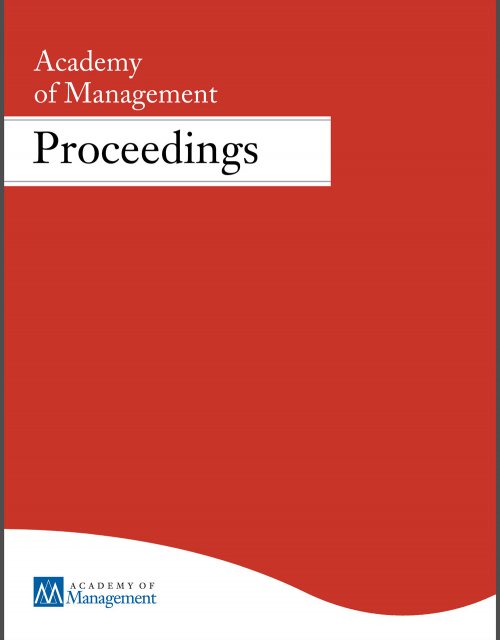Publication records
Subject(s)
Economics, politics and business environment; Finance, accounting and corporate governance
Subject(s)
Ethics and social responsibility
Secondary Title
Strategy to leverage CSR for competitive advantage
Pages
34–41
Subject(s)
Finance, accounting and corporate governance
Keyword(s)
AQR, stress tests, banking union, bail-out
JEL Code(s)
G01, G21, G28, G14, G15, F3
Subject(s)
Economics, politics and business environment
Keyword(s)
Labor contracts, incentives, behavioral economics, plantations
JEL Code(s)
D23, J33, L25
ISSN (Print)
0898-2937
Subject(s)
Human resources management/organizational behavior
Keyword(s)
Boards, crisis, diversity
A quarterly chat around the conference table between the chair and the old boy’s network (i.e., board members) no longer suffices, especially given market and stakeholder expectations, not to mention increasing efforts at mandating board diversity. So, what does the boardroom of the future look like? What are the challenges and strategies for effective functioning in that changing context? This symposium addresses what is actually happening in the current practice of board functioning as well as the state of current research, and seeks to build a picture of the functioning of boards of the future. Our panelists are seasoned academics, consultants and practitioners, and represent multiple perspectives on and experiences with boards across the US and Europe (and beyond) and will engage the audience—and each other—in a lively debate and discussion.
With permission of the Academy of Management
Volume
2014
ISSN (Online)
2151-6561
ISSN (Print)
0065-0668
Subject(s)
Marketing
Keyword(s)
confidence, correction, credibility, persuasion, advertising
At times, consumers are motivated to reduce the influence of a product recommendation on their judgments. Based on previous research, it is unclear whether this correction process will increase or decrease consumers’ confidence in their judgments. We find that source credibility moderates the effect of correction on confidence: correction decreases confidence when a product recommendation comes from a high credibility source but increases confidence when the same message comes from a low credibility source. As a result, correction increases the effectiveness of recommendations from low credibility sources on purchase intentions. Notably, this “confidence via correction” effect is further moderated by elaboration, such that the effect is attenuated for high elaboration consumers. Our results have implications for understanding consumers’ reactions to persuasive messages and for both marketing practitioners and consumer protection agencies using correction cues to influence message persuasiveness.
With permission of Elsevier
Volume
24
Journal Pages
34–48
Subject(s)
Finance, accounting and corporate governance
Keyword(s)
accounting, financial statements, SME, financial communication
JEL Code(s)
M410
Secondary Title
Rechnungslegung, Prüfung und Unternehmensbewertung
Pages
567–585
ISBN
9783791032825
Subject(s)
Economics, politics and business environment
Keyword(s)
reference-dependent utility, gain-loss utility, loss aversion, sticky prices, sales, supermarket pricing
It is widely known that loss aversion leads individuals to dislike risk, and as has been argued by many researchers, in many instances this creates an incentive for firms to shield consumers and employees against economic risks. Complementing previous research, we show that consumer loss aversion can also have the opposite effect: it can lead a firm to optimally introduce risk into an otherwise deterministic environment. We consider a profit-maximizing monopolist selling to a loss-averse consumer, where (following Koszegi and Rabin (2006)) we assume that the consumer's reference point is her recent rational expectations about the purchase. We establish that for any degree of consumer loss aversion, the monopolist's optimal price distribution consists of low and variable "sale" prices and a high and atomic "regular" price. Realizing that she will buy at the sale prices and hence that she will purchase with positive probability, the consumer chooses to avoid the painful uncertainty in whether she will get the product by buying also at the regular price. This pricing pattern is consistent with several recently documented facts regarding retailer pricing. We show that market power is crucial for this result: when firms compete ex ante for consumers, they choose deterministic prices.
This is an open access article.
Volume
9
Journal Pages
217–251
Subject(s)
Human resources management/organizational behavior
Keyword(s)
Non-routine situations, team adaptiveness, team interaction pattern
Previous research suggest that teams cycle through distinct phases of action (task activity) and transition (planning and interpretation of feedback and information) during routine work situations, and that during non-routine situations, effective teams also engage in reactive adjustments to plans. Other work suggests that during non-routine situations, the interaction patterns of effective teams differ significantly from less-effective teams. The first body of work does not consider contexts requiring teams to engage in constant task activity largely absent the reflective “downtime” of transition phases, while the second body of work does not examine team interaction patterns across both routine and non-routine situations. However, high-workload dynamic contexts demanding constant task activity and involving routine and non-routine situations are real and consequential, and present teams with critical challenges. Thus, given such a dynamic context, in this paper we examine: (1) the timing of in-process planning by teams; (2) the effect of this planning on subsequent team performance; and (3) the simultaneous and reactive differences of team interaction pattern characteristics across routine and non-routine situations. We find evidence that teams engage in significantly more in-process planning behavior during routine situations versus non-routine situations, that the relationship between this in-process planning and subsequent team performance is curvilinear, and that different interaction pattern characteristics are related to team performance in routine and non-routine situations.
With permission of the Academy of Management
Volume
2014
ISSN (Online)
2151-6561
ISSN (Print)
0065-0668
Subject(s)
Technology, R&D management
Keyword(s)
Broadcast search, innovation, prize competition
Prize competitions, an alternative to patents and grants for motivating potential inventors, have gained renewed interest in recent years. We analyze targeted prizes that are formalized into standards that solutions can be evaluated against ex ante, where the organizer of the prize competition stipulates a problem to be solved and distributes it to a pool of potential contest participants. To gain insight into how such competitions have been employed and functioned, we reviewed all papers on the topic published on Thomson ISI's database and reviewed how prize competitions have been used since the 1600s. Although many recent prize competitions have been privately sponsored, governments were early to use competitions to motivate inventors. We synthesize the literature using a novel process framework that captures the key challenges of prize competitions: (1) Define, (2) Broadcast, (3) Attract, and (4) Select. This DBAS framework allows us to advance theory about dimensions of prize competitions on which earlier literature is silent.
With permission of the Academy of Management
Volume
2014
ISSN (Online)
2151-6561
ISSN (Print)
0065-0668


